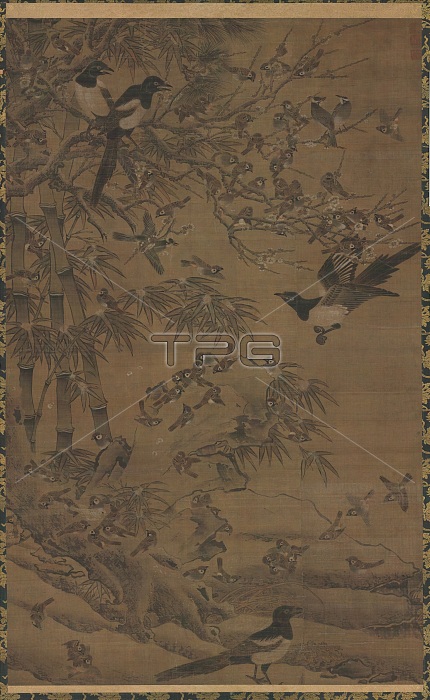
Hundred Birds and the Three Friends, first quarter of the 1400s. Among the most talented court painters of the Ming dynasty (1368-1644), Bian Wenjin was known for harmoniously combining elegant calligraphic brushwork with meticulous realism. From his close observations of nature, he carefully depicted four large magpies, medium-sized songbirds (bulbuls) with white necks and black heads, and numerous small sparrows in this painting. Ming period bird-and-flower paintings, as exemplified in this work, became much more ostentatious in size and colour scheme than those in earlier periods. Like many imperially commissioned works of art, Bian?s bird-and-flower works served as a vehicle to convey auspicious meanings or positive political messages for his imperial patrons. The "hundred bird" theme symbolizes the prosperity of a state under the rule of a sophisticated emperor. The "three friends of winter"?pine, bamboo, and plum blossoms?represent one?s enduring perseverance in a harsh environment.
| px | px | dpi | = | cm | x | cm | = | MB |
Details
Creative#:
TOP25290308
Source:
達志影像
Authorization Type:
RM
Release Information:
須由TPG 完整授權
Model Release:
No
Property Release:
No
Right to Privacy:
No
Same folder images:

 Loading
Loading